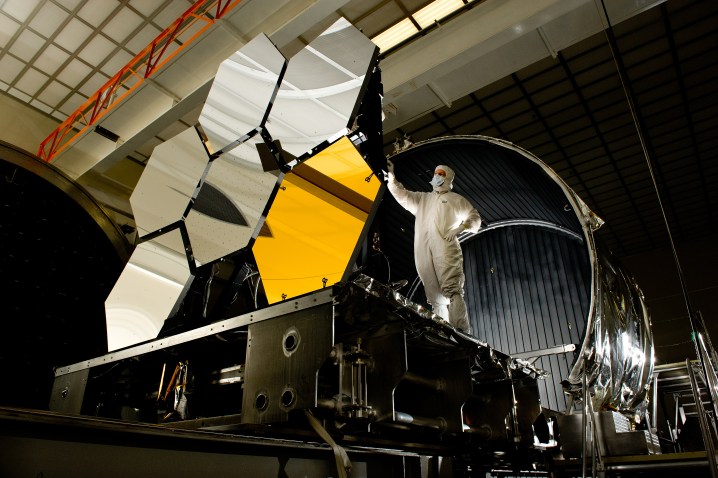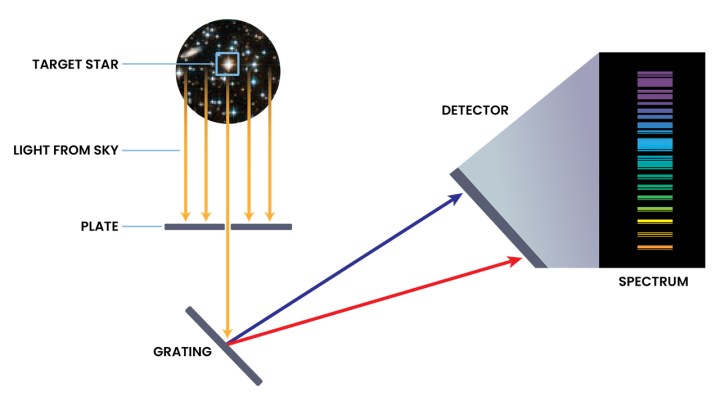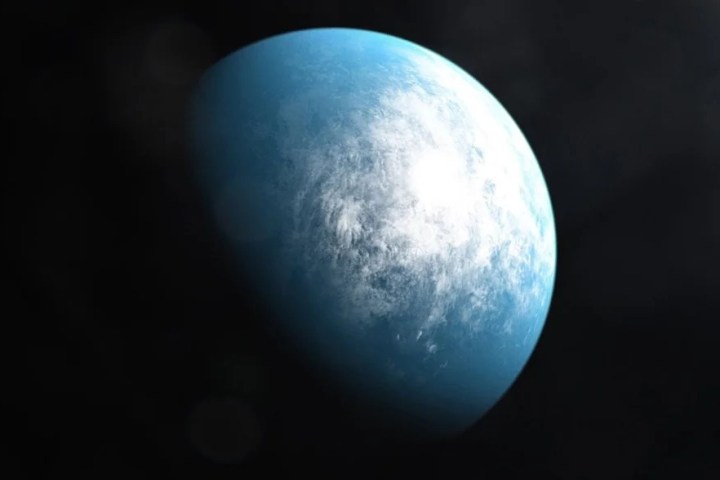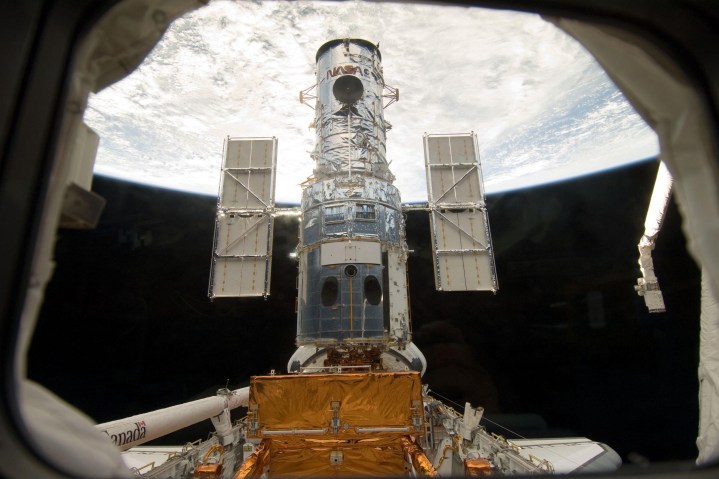
When it comes to building enormous, complex space telescopes, agencies like NASA have to plan far in advance. Even though the James Webb Space Telescope only launched recently, astronomers are already busy thinking about what will come after Webb — and they’ve got ambitious plans.
The big plan for the next decades of astronomy research is to find habitable planets, and maybe even to search for signs of life beyond Earth. That’s the lofty goal of the Habitable Worlds Observatory, a space telescope currently in the planning phase that is aimed at discovering 25 Earth-like planets around sun-like stars.
We spoke to two of the scientists working on plans for this next-generation space telescope to find out more.
The power of direct imaging
One of the big challenges in finding habitable planets beyond our solar system is this: We can rarely actually see these far-off planets directly, because planets are so small and dim compared to stars. So to identify an exoplanet, astronomers generally infer its existence due to its effects on its host star. Currently, tools like the Hubble or James Webb space telescopes most often look for dips in a star’s brightness when a planet passes in front of it, called a transit, or they look for a wobble of the star caused by the gravity of the planet, called the radial velocity method.
“This is a multigenerational, probably multi-century endeavor that we’re on.”
Those methods give us clues, but to really understand exoplanets in depth, we need to be able to image them directly. Current telescopes are rarely able to do this because it requires such a high level of precision, but scientists are already planning out a next generation of space telescopes that will be able to take images of exoplanets.

The next big space telescope to be launched is the Nancy Grace Roman Space Telescope, scheduled to launch in 2027. It will perform a survey of the sky to estimate how many habitable exoplanets are out there. After that comes the Habitable World Observatory, a planned space telescope that will directly image Earth-like exoplanets around sun-like stars and which should launch around 2040. This will be the best chance we’ll have to date of discovering habitable Earth-like worlds where we could search for evidence of life beyond Earth.
Choosing the right wavelength
If you’ve followed the news about the James Webb Space Telescope, you’ve likely heard that it looks in the infrared part of the electromagnetic spectrum. That’s essential for its goal of studying the earliest galaxies, as it allows scientists to see galaxies with high levels of redshift. Infrared is also useful for looking through clouds of dust and seeing structures that would otherwise be hidden.
The plan for the Habitable Worlds Observatory, however, is to look in the optical and ultraviolet wavelengths. These wavelengths are useful for identifying the signatures of specific atoms such as hydrogen or oxygen, so we can point our instruments toward a planet and learn what its atmosphere is composed of.
There are all sorts of options for what particular atoms or compounds we could look for, but oxygen is the leading choice right now for what is called a biomarker, or a clue that indicates the potential presence of life. Spotting oxygen on a distant planet may be a sign that it warrants further inspection.
“There’s no perfect biomarker signature,” said David Sing of Johns Hopkins University, as we could also look for atoms like methane, and there’s always the possibility of a false positive, “but oxygen is a really important one.”
Oxygen also gives off a very strong signal, which makes it relatively easier to detect. In particular, ozone — which is a variation of oxygen with three atoms bound together — has a very strong signature in the ultraviolet wavelength. Think about how the ozone layer on Earth protects us from the ultraviolet radiation from the sun, and you can see how scientists could infer the presence of ozone on a distant planet if they saw a particular wavelength of ultraviolet light being blocked.
How to build an optical/UV telescope
With its focus on optical and ultraviolet wavelengths, the Habitable Worlds Observatory will be more similar to the Hubble Space Telescope than the James Webb Space Telescope. And that brings some advantages in terms of how you build a telescope.
Infrared telescopes like Webb are very sensitive to temperature (because when things get hot, they give off infrared radiation). So to work accurately, Webb needs to be cooled to extremely low operating temperatures of just a few Kelvin for some instruments. That makes the telescope more complex and expensive to build, as it requires a cryogenic cooling system.
For a telescope like the Habitable Worlds Observatory, that kind of extreme cooling isn’t necessary, which helps to keep the costs down.

Another key difference between infrared telescopes like Webb and optical/ultraviolet telescopes like the Habitable Worlds Observatory is the mirror. Webb’s primary mirror is coated with gold, which reflects infrared light very well. But an optical/ultraviolet telescope has a mirror coated with silver, which is more efficient at reflecting those wavelengths.
New technologies for a new decade
In some ways, we already know exactly what sorts of instruments will be required to look for habitable worlds, as these are updates to existing instruments rather than entirely new concepts.
For example, the instruments on Habitable Worlds will be somewhat similar to those on James Webb or Hubble, as they will consist of cameras and spectrographs. The cameras will be used to look for exoplanets in other star systems, and once a planet has been identified, it can be studied in more depth using the spectrographs. Spectrographs work by splitting incoming light into different wavelengths, to see which wavelengths have been absorbed. That tells you what the object that you’re looking at is composed of — and that’s how you can see whether an exoplanet has an atmosphere, and what that atmosphere is made of.

Refining these instruments and making them more accurate is not a trivial endeavor. In addition to direct detection, the next generation of space telescopes will also use techniques like radial velocity for identifying exoplanets. And more accurate spectrographs will enable techniques like extreme precision radial velocity, which allows more accurate measurements of the masses of exoplanets orbiting sun-like stars.
But more theoretical advances are required as well. One major factor required to improve our understanding of exoplanets, for example, is improving our understanding of stars. Stars can become brighter or dimmer for all sorts of reasons, and we need to be able to model this more accurately if we want to determine whether a variation is caused by the presence of an exoplanet, or is due to variation of the star.
Hunting for habitability
Even with a brand-new telescope equipped with brand-new technology, however, it won’t be a simple matter to find life beyond our solar system. That’s because habitability is a complex concept that requires more than just identifying an Earth-like planet orbiting a sun-like star.
“A planet that looks like it’s about the right brightness to be an Earth-sized planet, that has a roughly circular orbit in what we would call the habitable zone, shows some evidence for water vapor, maybe some oxygen, there’s no inner giant planet that has stirred things up, the star isn’t too active — that’s the kind of system we’re hoping to find as a candidate for a potentially habitable planet,” Scott Gaudi of the Ohio State University said.

But as tempting as it is to imagine a scenario where we build this telescope, find a habitable planet, then immediately detect life, that’s not how this will work, Gaudi said.
To properly search for habitable exoplanets, “we really have to get the whole context, which means studying the other planets in the systems, the debris disks, studying the stars,” Gaudi said. “That’s what’s really going to help us understand whether or not these planets are truly habitable.”
There’s a temptation to imagine that “we’re going to build the Habitable Worlds Observatory, we’re going to find life, and we’re done,” Gaudi said, but “it’s not going to work that way. If we’re lucky, we’re going to find one or two, maybe three, systems that look pretty promising. And then we’re going to have to build something even bigger and better.”
A multigenerational endeavor
Even if we’re able to find the ideal-looking system with a potentially habitable Earth-like world, then the next step would be to look at even more advanced factors, such as how much of the planet is covered by oceans and how much is land mass. Searching for life isn’t something that is going to be solved any time soon, but scientists are now laying the groundwork for Habitable Worlds Observatory to take on the next part of the job in 20 years’ time.
That’s similar to the way that planning for the James Webb Space Telescope began around 2000, and scientists today are just starting to be able to use this tool for discovery.
“Several decades ago, I was just a young student. But I’ve reaped the rewards of all that hard work that people did at the time,” Sing said. “And that generation of scientists felt that way because people did it for them with the Hubble Space Telescope. So there’s this legacy where you’re reaping the rewards of what senior scientists did 20 years ago. And you want to make sure that legacy will continue 20 years from now.”

Because wondering whether life could exist beyond Earth is one of the most profound questions facing science today, and it won’t be solved quickly. The Habitable Worlds Observatory is the next step on that journey, but it won’t be the end point.
“This is a multigenerational, probably multi-century endeavor that we’re on,” Gaudi said. “And I think that we should be optimistic about that process, but we should also be humble.”
Editors' Recommendations
- NASA is looking for volunteers for yearlong simulated Mars mission
- NASA’s Mars drone just set another flight record
- Space bags are the next big idea to clean up orbital junk
- James Webb telescope searches for habitability in the famous TRAPPIST-1 system
- How NASA’s astronaut class of 1978 changed the face of space exploration





